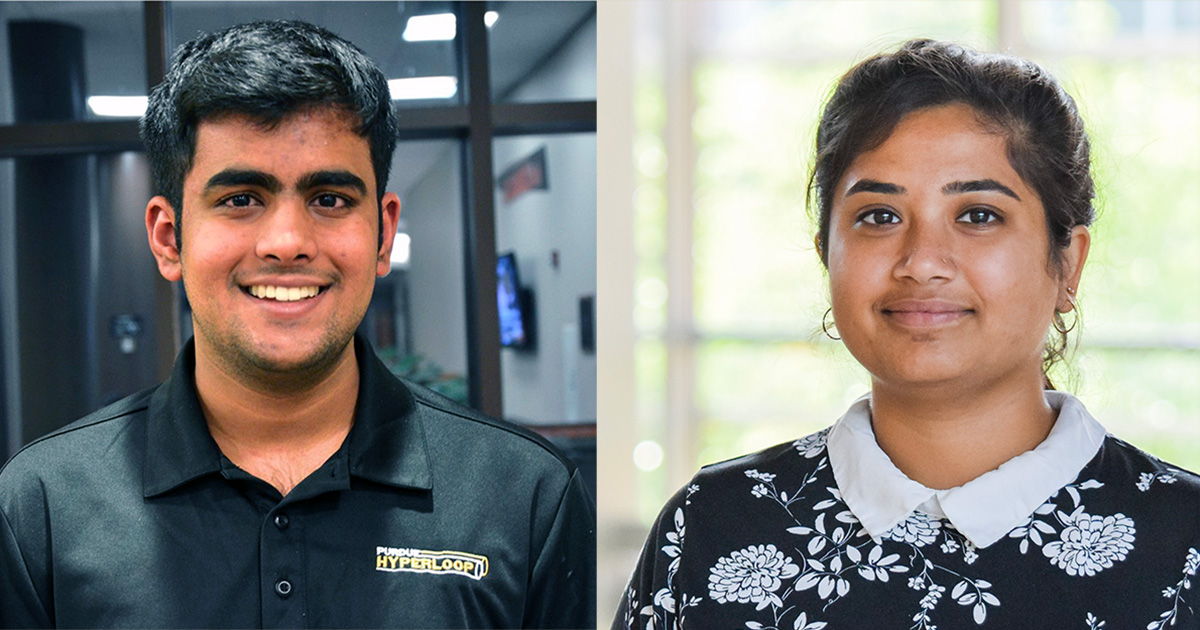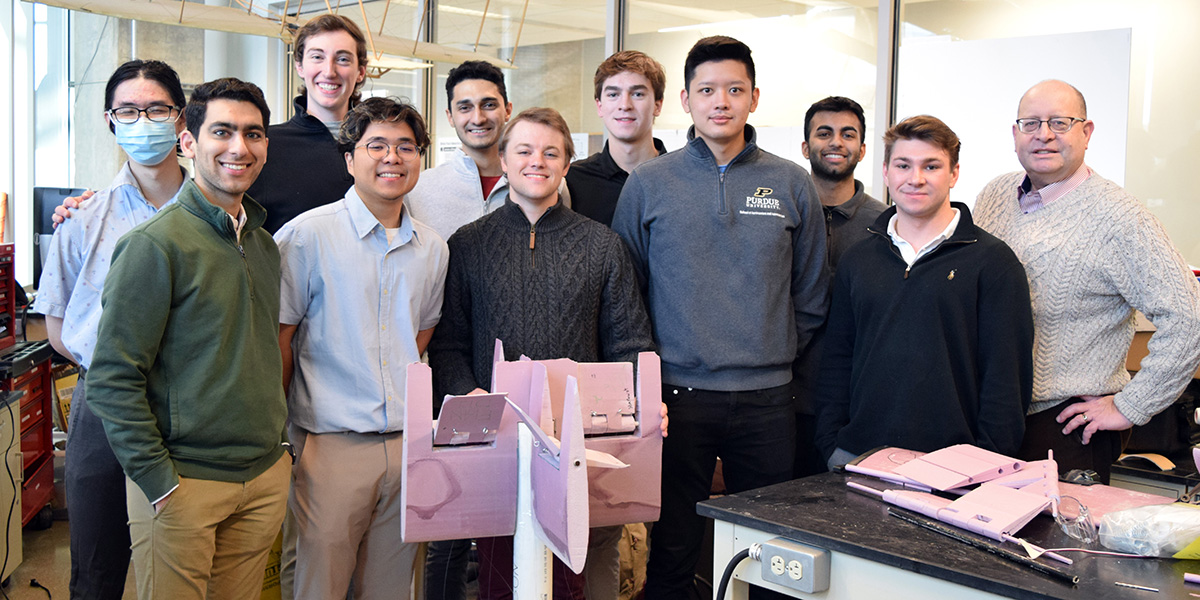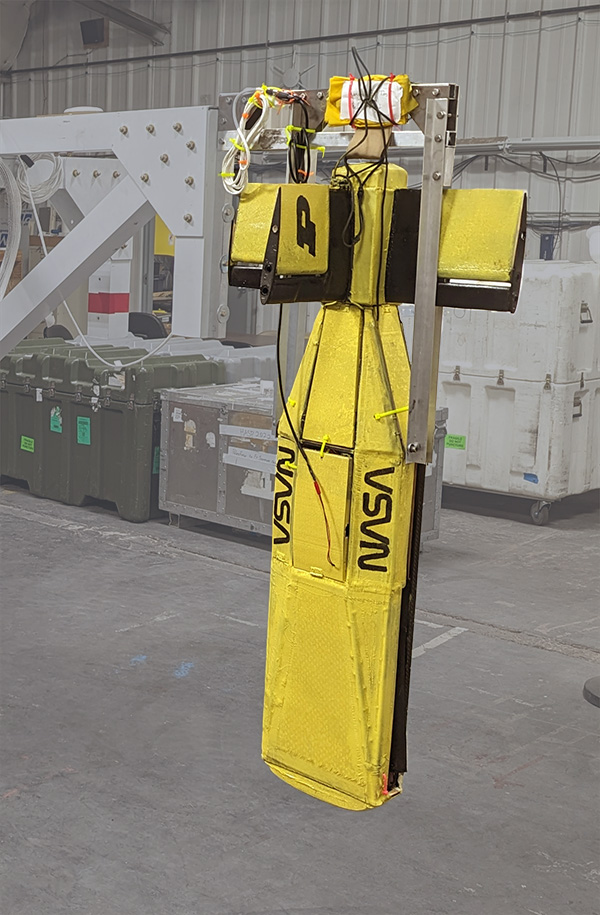
A team of Purdue students, pictured above, went on a two-week mission to the Mars Desert Research Station in January 2023, simulating the experiences of crew life on a research station on the red planet. A first-person account by AAE student Kenneth Pritchard was posted to the AAE website. Two new crews are headed to MDRS for separate missions in December 2023.

A partnership with Morgan State, a historically black college, complements Purdues efforts to provide opportunities for minority students in STEM fields. Don-Terry Veal is the first student to participate in Morgan State/Purdue 3+2 program, allows students to earn bachelors degrees in distinct majors from both schools. "When you don't see a lot of African Americans in the industry, especially in administrative positions, then it becomes a lot more daunting for you to see yourself in that position unless you already have some exposure to those who are pushing you," Veal Jr. says. "That's why I went to Morgan State: so I could experience more than just what is the norm."
He has completed an engineering physics degree at Morgan State and is expected to receive his second bachelors degree, from Purdue, in Spring 2024. Scholarships from various sources, including discretionary funding from the headship endowment established by William Uhrig and Anastasia Vournas, are helping to keep his Purdue costs as close as possible to his costs at Morgan State.
Veal is also planning to complete a 1-year masters degree at Purdue through the AAE combined BS/MS program, then pursue his PhD in aeronautics and astronautics.
Read Don-Terry Veal's full story in The Persistent Pursuit.

A total of 50 Purdue undergraduate students from across 9 majors showcased their engineering skill on the global stage at the 2023 Student Unmanned Aerial Systems international competition. The challenge, held annually in St. Marys County, Maryland, attracted 70 teams from 30 countries.
The Purdue Aerial Robotics Team (PART) designed and built a fixed-wing vehicle with a 14-foot wingspan to autonomously identify potential drop zones, navigate and deliver packages. They placed 13th overall, 3rd out of the U.S. teams participating.
The molds from this vehicle were used to build an aggressor vehicle for the TSUNOMI project, a congressional task that Purdue and Saab are supporting through the Office of Naval Research.
Through the Future Investigators in NASA Earth and Space Science and Technology (FINESST) program, Siddharth Subramanyam and Archana Choudhari will both be assessing if Signals of Opportunity (SoOp) methods can be used to take measurements on Earths surface. Their principal investigator (PI), professor Jim Garrison, is a pioneer in this field.

Siddharth Subramanyam (left) and Archana Choudhari
Choudhari will look at root-zone soil moisture levels, which can provide warning of flood or drought. Subramanyam will explore techniques and methods of orbit determination of SoOp sources, that would enable a future SoOp altimetry mission.
Two of the 165 National Defense Science and Engineering Graduate (NDSEG) Fellowship awards were awarded to Purdue AAE students Layton Howerton and Liam Robinson. Robinson is continuing the Space Domain Awareness study he began as an undergraduate under associate professor Carolin Frueh. He will further develop his reflectivity analysis algorithms to study satellites and orbital debris in greater detail. He also received fellowship offers from NASA and the National Science Foundation to pursue this work.

Leighton Howerton (left) and Liam Robinson
Howerton is using computer simulations to study how shapes can affect aerodynamic heating at supersonic and hypersonic speeds. His work focuses specifically on the shockwave and boundary layer interactions common at those speeds. Howerton is working under AAE professors Jon Poggie and Greg Blaisdell.

The Purdue DRAGONfly team, together with advisor Steven Collicott (at right), stand with an early foam mockup of their autonomous data delivery vehicle. (Purdue University photo/Alan Cesar).
A team of Purdue students are among the six finalists for the Formulate, Lift, Observe, And Testing; Data Recovery And Guided On-board Node Balloon Challenge. Each team designed a vehicle that could be released from a high-altitude balloon above 110,000 feet, which would then autonomously identify one of the designated landing spots and safely deliver its fragile payload of data storage drives. The finalists received NASA funding to build their designs. Purdue's was among those selected to be released over Antarctica in late 2024.

The DRAGONfly team's final vehicle will be released from 100,000 feet over Antarctica in late 2024 or early 2025. (Photo courtesy of Alexander Terry).